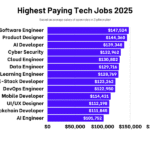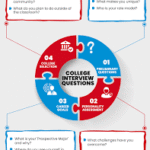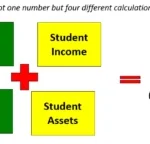We’re living in a time where technology is transforming nearly every aspect of life, and education is no exception. Artificial Intelligence (AI) is at the midpoint of this transformation. It’s not just a buzzword anymore; AI is becoming a real game-changer in how we teach, learn, and manage educational systems.
Let’s take a look at how AI is actively shaping the classrooms of tomorrow.
Learning That Adapts to Every Student
No two students learn the same way. Some need visual aids, others prefer reading or hands-on practice. AI is helping bridge these differences by offering personalized learning experiences.
Modern platforms like Khan Academy, Google Classroom, and Duolingo use AI to:
- Track student performance and behavior
- Adjust lesson difficulty based on progress
- Recommend content that suits individual learning styles
This kind of customized learning helps students stay engaged and learn at their own pace — making education more effective for everyone.
Your Always-Available Virtual Tutor

Need help with homework at midnight? No problem. AI-powered tutors are available 24/7, offering real-time assistance. Tools like ChatGPT, Socratic, and Photomath are helping students:
- Solve difficult problems step-by-step
- Understand tricky concepts clearly
- Improve their writing and grammar
These tools are especially beneficial for students in remote or low-resource areas where personal tutoring may not be accessible.
Smarter Grading and Instant Feedback
One of the biggest time-drains for teachers is grading. AI is taking on that burden by:
- Automatically grading multiple-choice and written answers
- Highlighting common student mistakes
- Offering suggestions to improve learning outcomes
This not only saves teachers valuable time but also gives students faster feedback to help them improve immediately.
Spotting Learning Struggles Early
With AI-driven analytics, schools can now detect when a student is struggling—even before grades start to drop. AI helps track patterns that signal:
- Decreased engagement
- Lower test scores
- Risk of falling behind or dropping out
This allows educators to offer timely support and keep students on track before issues escalate.
Helping Teachers Create Content Faster
Making lesson plans, tests, and presentations can be a daunting task for educators who already have a lot on their plate. Fortunately, AI tools can now:
- Generate lesson summaries and quizzes
- Translate content into different languages
- Suggest up-to-date resources
This support enables teachers to spend more time engaging with students and less time stuck behind a screen.
Making Education Truly Global
AI is also helping to break language barriers. Thanks to tools like Google Translate and language learning apps, students from different backgrounds can:
- Learn in their native language
- Participate in international classrooms
- Understand course materials from around the world
This creates more inclusive and diverse learning environments where everyone has the chance to thrive.
Immersive Learning Through AI + VR
AI, when paired with Virtual Reality (VR), takes learning to the next level. Students can now:
- Explore historical places virtually
- Perform science experiments in a digital lab
- Interact with complex subjects in a hands-on way
These immersive experiences make learning not just more exciting, but also more memorable.
Important Challenges to Address
While AI brings incredible advantages, there are some concerns we can’t ignore:
- Data Privacy: Students’ personal information must be protected.
- Algorithm Bias: AI tools must be fair to all learners.
- Access Gaps: Not all students have equal access to devices or the internet.
That’s why schools, developers, and governments must work together to ensure AI is used responsibly and fairly.
Wrapping Up
The purpose of AI is to improve instructors’ skills, not to replace them.. With smart tools and intelligent insights, educators can reach more students, personalize lessons, and create richer learning environments.
As AI continues to grow, the future of education looks brighter, more flexible, and more inclusive than ever.










